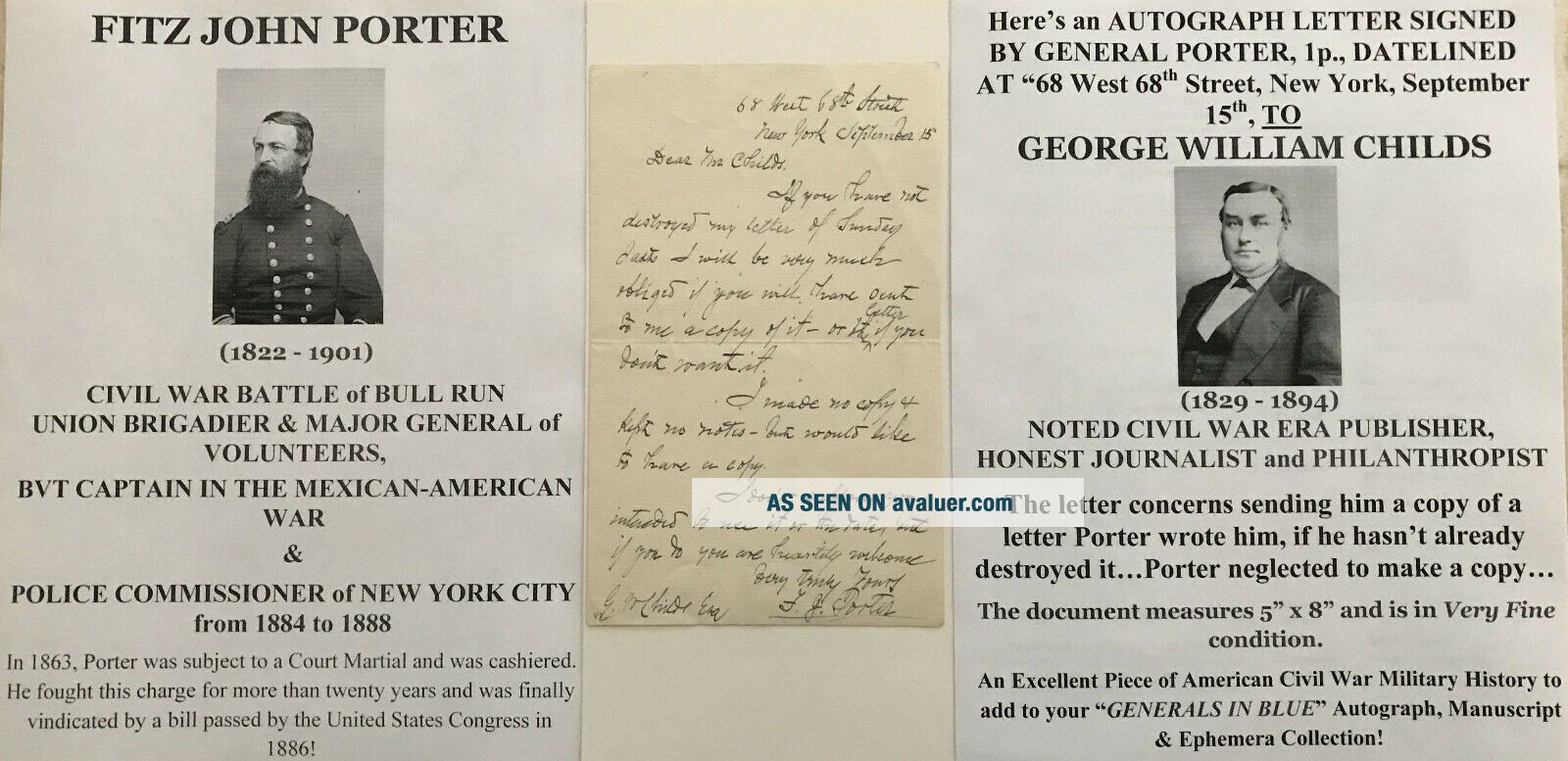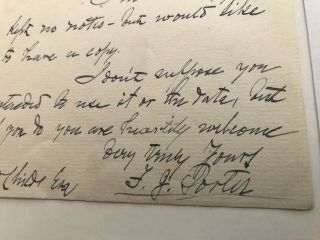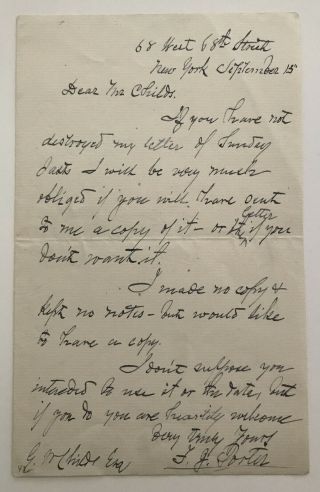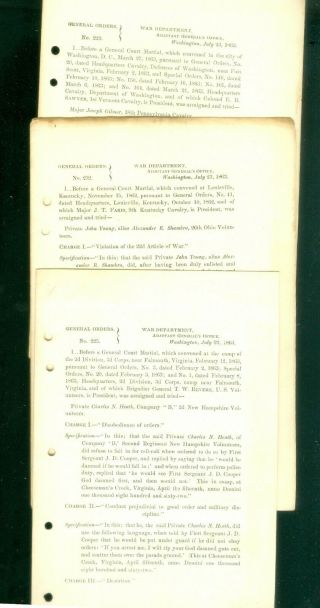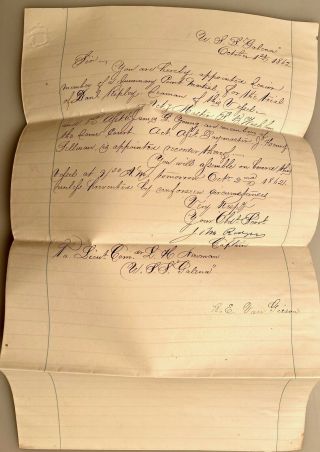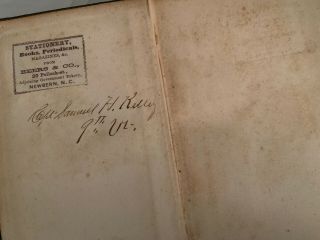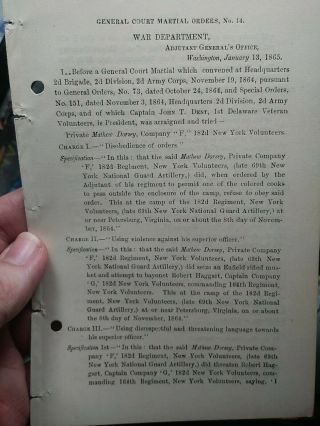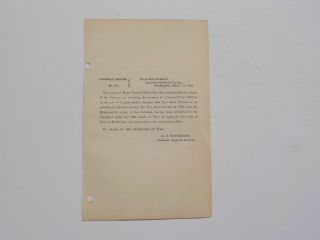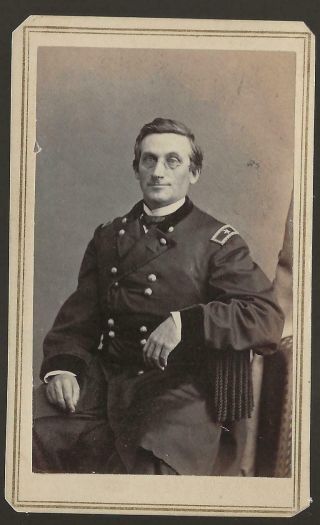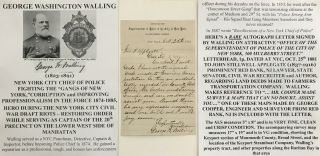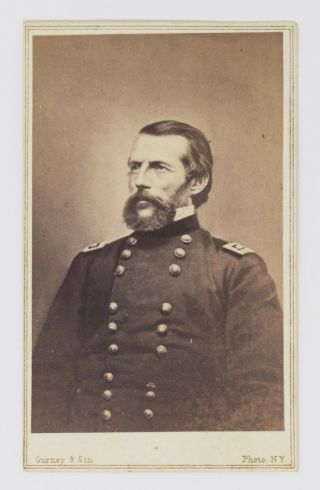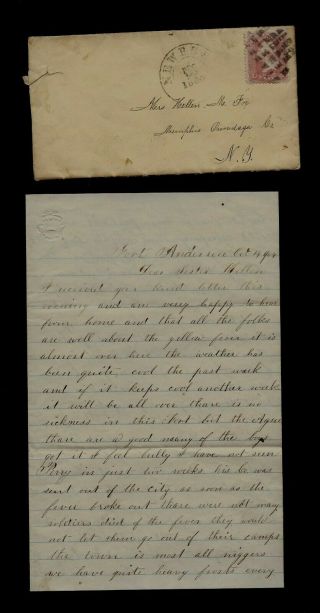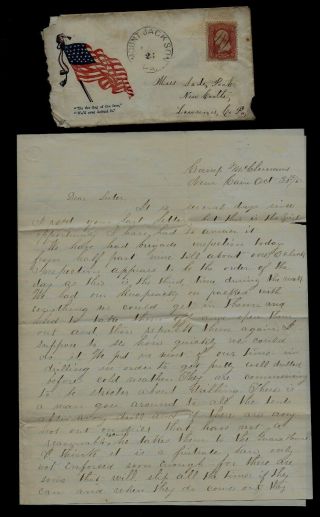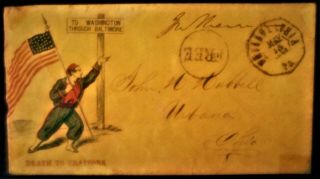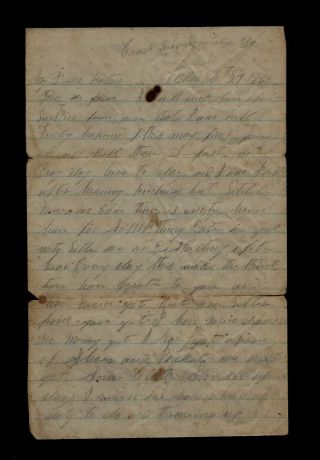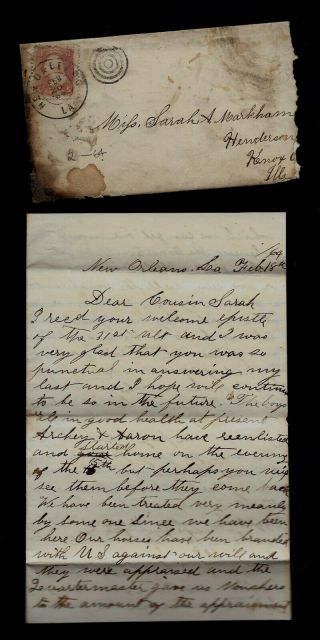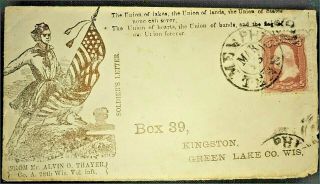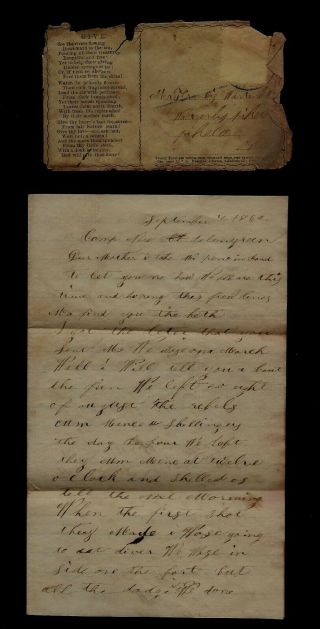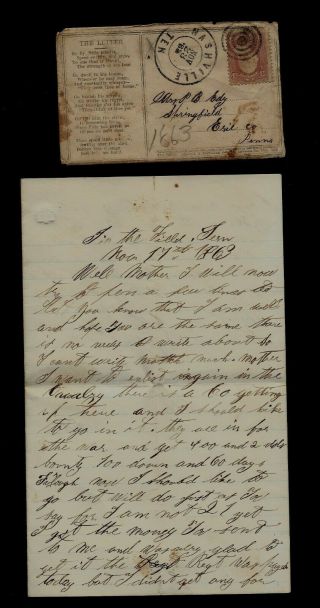CIVIL WAR COURT MARTIAL GENERAL POLICE COMMISSIONER YORK CITY LETTER SIGNED
Item History & Price
| Reference Number: Avaluer:101115 | Modified Item: No |
| Featured Refinements: Civil War Letter | Country/Region of Manufacture: United States |
UNION BRIGADIER & MAJOR GENERAL OF VOLUNTEERS, BVT CAPTAIN IN THE MEXICAN-AMERICANWAR&POLICE COMMISSIONER of NEW YORK CITY FROM 1884 to 1888In 1863, Porter wassubject to a Court Martial and was cashiered. He fought this charge for more than twenty years and was finallyvindicated by a bill passed by the United States Congress in 1886!Here’san AUTOGRAPH LETTER SIGNED BY GENERAL PORTER, 1p., DATELIN...ED AT “68 West 68thStreet, New York, September 15th, TOGEORGE WILLIAM CHILDS (1829 -1894)NOTED CIVIL WAR ERA PUBLISHER, HONESTJOURNALIST and PHILANTHROPIST Theletter concerns sending him a copy of a letter Porter wrote him, if he hasn’talready destroyed it…Porter neglected to make a copy…The document measures 5”x 8” and is in Very Finecondition.AnExcellent Piece of American Civil War Military History to add to your “GENERALS IN BLUE” Autograph, Manuscript& Ephemera Collection!<<::>>BIOGRAPHICAL SKETCH OF FITZ JOHN PORTERFitz John Porter (FitzJohn, Fitz-John)was born in Portsmouth, New Hampshire on August 31, 1822. His family earnedprominence for their services to the American Navy, as Fitz John Porter’scousins were William D. Porter, David Dixon Porter, and David G. Farragut. Alternatively, he pursued an army career, graduating in 1845 from the United States MilitaryAcademy (West Point), eighth out of 41 cadets.Porter was promoted to secondlieutenant on June 18, 1846 and First Lieutenant on May 29, 1847. He served inthe Mexican-American War and was appointed a brevet captain on September 8, 1847 for his bravery at the Battle of Molino del Rey. In addition, he waswounded at Chapultepec on September 13, for which he also received a brevetpromotion to major.After the war with Mexico ended, Porter returned to West Point and became a cavalry and artillery instructor (1849– 1853), and then became adjutant to the academy's superintendent until 1855.He served at Fort Leavenworth, Kansas, as assistant adjutant general in theDepartment of the West (1856), where he was brevetted to captain that June. Porter then served under futureConfederate Albert Sidney Johnston in the expedition against the Mormons (1857– 1858). Afterwards he inspected and reorganized the defenses of CharlestonHarbor, South Carolina until late 1860, when he aided in the evacuation of armypersonnel from Texas after the state seceded from the Union.Soon after the start of the Civil War, Porter became chief of staff and assistant adjutant general for the Departmentof Pennsylvania. He was almost immediately promoted to colonel of the 15thInfantry (May 14, 1861), and in August, to brigadier general, although thisrank had been backdated to May 17 so he would be senior enough to receivedivision command in the Army of the Potomac, newly formed under Maj. Gen.George B. McClellan. Soon Porter became a trusted adviser and loyal friend toMcClellan, but this association with the soon-to-be-controversial commandinggeneral would prove to be disastrous for Porter's military career.Porter led his division at thebeginning of the Peninsula Campaign, seeing action at the Siege of Yorktown.McClellan created two provisional corps and Porter was assigned to command theV Corps. During the Seven Days Battles, and particularly at the Battle ofGaines' Mill, he displayed a talent for defensive fighting. At the Battle ofMalvern Hill he also played a leading role. For his successful performance on thePeninsula he was promoted to major general of volunteers (July 4, 1862).Porter's corps was sent to reinforceMajor General John Pope in the Northern Virginia Campaign, a reassignment thatPorter openly challenged and complained about, as he was not fond of Pope.During the Second Battle of Bull Run (August 29, 1862) he was ordered to attackthe flank and rear of Major General Thomas J. "Stonewall" Jackson'swing of the Army of Northern Virginia. Porter had stopped at Dawkin's Branchwhen he encountered Major General J.E.B. Stuart's cavalry screen. He received amessage from Pope instructing him to attack the Confederate right (which Popeassumed to be Jackson on Stony Ridge), but at the same time to maintain contactwith the neighboring division under Major General John F. Reynolds, a conflictin orders that could not be resolved. Pope was unaware that Confederate MajorGeneral James Longstreet's wing of the army had arrived on the battlefield andthe proposed envelopment of Jackson's position would have collided suicidallywith Longstreet's large force. Porter chose not to make the attack because ofthe intelligence he had received that Longstreet was to his immediate front. On August 30 Pope again ordered theflank attack, and Porter reluctantly complied. As the V Corps turned to headtowards Jackson's right and attacked, it presented its own (and consequentlythe entire army's) flank to Longstreet's waiting men. About 30, 000 Confederatesassailed Porter's 5, 000 men and drove through them and into the rest of Pope'sforces, fulfilling Porter’s worst fears. Pope was infuriated by this defeat, accused Porter of insubordination, and relieved him of his command on September5.Porter was soon restored to command ofthe corps by McClellan and led it through the Maryland Campaign, where thecorps served in a reserve position during the Battle of Antietam. He is famouslysaid to have told McClellan, “Remember, General, I command the last reserve ofthe last Army of the Republic.” McClellan took his implied advice and failed tocommit his reserves into a battle that might have been won if he had used hisforces aggressively.On November 25, 1862, Porter wasarrested and court-martialed for his actions at Second Bull Run. By this time, McClellan had been relieved by President Abraham Lincoln and could no longerprovide political cover for him. In fact, Porter's association with thedisgraced McClellan and his open criticism of Pope were significant reasons forhis conviction at court-martial. Thus, Porter was found guilty of disobedienceand misconduct (January 10, 1863) and was dismissed from the Army (January 21, 1863).Post-Civil War, Porter declined anoffer to command the Egyptian Army but declined, spending most of the remainderof his life fighting against the perceived injustice of his court-martial.In 1878, a special commission underGeneral John M. Schofield exonerated Porter by finding that his reluctance toattack Longstreet had likely saved Pope's Army of Virginia from an even greaterdefeat. Eight years later, President Chester A. Arthur reversed Porter'ssentence and a special act of the U.S. Congress restored Porter's commission asan infantry colonel in the U.S. Army, backdated to May 14, 1861, but withoutany back pay due. Two days later, on August 7, 1886, Porter retired from theArmy at his own request.Until his death, Porter was involvedin mining, construction, and commerce. He served as the New York CityCommissioner of Public Works, the New York City Police Commissioner, and theNew York City Fire Commissioner. He died in Morristown, New Jersey on May 21, 1901.<<::>>BIOGRAPHICAL SKETCH OF GEORGE WILLIAMCHILDSChilds, George William (12 May 1829-3 Feb. 1894), publisher, biographer, and philanthropist, wasborn in Baltimore, Maryland. The names of his parents are not known. In Recollections (1890), his autobiography, Childs shrouds his family origins in mystery, making no reference to hisparents or early childhood, beginning instead with an explanation of how he hadhad from a young age "a rather remarkable aptitude for business." Attwelve he worked a summer job as an errand boy in a Baltimore bookstore for twodollars a week. He reflects in Recollections that this first job taught himvaluable lessons about the "wholesome habit of doing things directly andin order." At age thirteen Childs entered theU.S. Navy and was stationed in Norfolk, Virginia. Because he did not like navy life, hereturned to Baltimore after fifteen months and attended school for a year. Atage fourteen, with no family or money, he moved to Philadelphia, where heworked as a clerk and errand boy in the bookstore of Peter Thomson. In theevenings he accompanied Thomson to book auctions, where he "becamefamiliar with the titles and prices of valuable books" (Recollections, p.11) and came into contact with important publishers, such as the Harpers, Lippincotts, and Putnams. By age eighteen Childs had saved enough money to opena business in the old Public Ledger building. He does not indicate inRecollections what kind of business he operated, but he was successful enoughby 1850 to join the publishing firm of R. E. Peterson. In 1854 the companychanged its name to Childs and Peterson. Among the successful publications ofthis house were Elisha Kane's Arctic Explorations (1856), which yielded Kane$70, 000 in royalties, and Samuel Austin Allibone's Critical Dictionary ofEnglish Literature and British and American Authors (1858), the first volume ofwhich was dedicated to Childs. In 1860Childs bought out Peterson, and three years later he left the book publishingbusiness. Sometime during these years Childs married his partner's daughter, Emma Bouvier Peterson; they had no children. On 3 December 1864, with the silentbacking of his closest friend, Anthony J. Drexel, Childs purchased the PublicLedger for an estimated $150, 000, or slightly more than the paper's annualloss. Within a week he doubled the price of the paper to two cents and raisedadvertising rates "to a profitable figure, " resulting in a sharpdecrease in circulation. But Childs and his chief editor, William V. McKean, were able to win back the readership by elevating the paper's tone, maintaininga high level of accuracy and morality, and refusing to print scandal orsensation. Childs instructed his editors to delay publication of a story untilthey were absolutely sure about the facts, preferring to print a story"correctly the following day." The paper also provided extra spacefor financial and business news. On 20 June 1867 Childs opened the newPublic Ledger building at the corner of 6th and Chestnut. The following monthhis workers thanked him "for having built a palace for them to workin." He was popular with his employees, and his consideration for them wasextraordinary. He paid good wages, hired women for the same wages as men, instituted a pension plan, provided life insurance so that families would notbe left destitute, and gave paid vacations and Christmas bonuses. In addition, he presented a cemetery to the Philadelphia typographical society and, withDrexel, established in Colorado Springs, Colorado, a home for printers whosehealth had failed. What made Childs happiest about his publishingbusiness was that it allowed him to meet many famous people, and much of hisautobiography describes encounters with prominent Europeans and Americans. At"Wootton, " his home in the then brand-new suburb of Bryn Mawr, he and his wife hosted many famouspeople. Those meriting attention in Recollections include Washington Irving; Nathaniel Hawthorne; CharlesDickens; Generals Ulysses S. Grant, William T. Sherman, George Meade, and Philip Sheridan; the duke and duchess of Buckingham; and Dom Pedro II, emperor of Brazil, for whom Childs hosted a 600-guest reception in 1876. Two chapters of Recollections deal withGrant, whom he met after the victory at Vicksburg in 1863 and with whom hemaintained a close friendship until Grant's death in 1885. At that time Childspublished Recollections of General Grant. Childs amassed a large and valuablelibrary that included a handwritten 1703 Cotton Mather sermon; the 1841seventeen-page manuscript of Edgar Allan Poe's "Murders in the RueMorgue"; two volumes inscribed to Dickens; the original manuscript of OurMutual Friend; and the desk on which Lord Byron wrote Don Juan, as well as avariety of poems, letters, and manuscripts by William Godwin, James FenimoreCooper, Jonathan Swift, Samuel Coleridge, and John Keats. His prized possessionwas a large folio containing portraits and signed letters of every president from George Washington to BenjaminHarrison, which included eight lettersfrom various presidents to Childs himself. He donated much of his collection tothe Drexel Institute (now Drexel University) when it opened in 1892. Throughout the 1880s Childs generouslygave considerable time and money to many important civic projects inPhiladelphia, which included the founding of the Zoological Garden, thePennsylvania Museum, the School of Industrial Arts, and America's firstsuburban development in Wayne. In 1887, when President Grover Clevelandappointed him a member of the U.S. Military Academy board of visitors, Childsdonated a portrait of Grant and commissioned portraits of Sheridan and Sherman, all three of which were hung in Grant Hall. In addition, Childs gave money forseveral monuments in Great Britain, including a memorial window at WestminsterAbbey honoring poets George Herbert and William Cowper (1877), a memorialdrinking fountain to the people of Stratford commemorating Queen Victoria'sJubilee (1887), a window honoring John Milton to St. Margaret's, Westminster(1888), and the reredos to the Church of St. Thomas in Winchester in memory of BishopsLancelot Andrewes and Thomas Ken. Childs died in Philadelphia. Called the most notable citizen ofPhiladelphia since Benjamin Franklin, Childs was recognized as a truejournalist. In the words of former New York Governor John T. Hoffman, Childs was one who understood"the difference between the liberty of the press and the license of thepress." But he received the most praise for being an open-handedphilanthropist. Indeed, Childs wanted most to be remembered for his generosity:"If asked what, as the result of my experience, is the greatest pleasurein life, I should say doing good to others. Being generous grows on one just asbeing mean does." The Drexel family received the Public Ledger, withGeorge William Childs Drexel assuming the editorship. Drexel sold the paper in1903. Bibliography Childs's papers are housed at DrexelUniversity. Useful biographical information about Childs is in James Parton, George W. Childs: A Biographical Sketch (1870); J. W. Forney, Anecdotes ofPublic Men (1873; repr. 1970); and Frederic Hudson, Journalism in the U.S. from1690-1872 (1872; repr. 1968). Childs is also discussed in E. Digby Baltzell, Philadelphia Gentlemen: The Making of a National Upper Class (1958). See alsoNicholas B. Wainwright, "ThePhiladelphia Inquirer, Oldest Daily Paper in the United States, "supplement to the Philadelphia Inquirer, 16 Sept. 1962. Notices regardingChilds's death and legacy are in the New York Times, 3 and 4 Feb. 1894, and theAthenaeum, 10 Feb. and 17 Mar. 1894, as well as in newspapers worldwide.[Source: American National Biography]I am a proud member of the Universal Autograph Collectors Club(UACC), The Ephemera Society of America, the Manuscript Society and theAmerican Political Items Collectors (APIC) (member name: John Lissandrello). Isubscribe to each organizations' code of ethics and authenticity is guaranteed.~Providing quality service and historical memorabilia online for over twentyyears.~
WE ONLY SELL GENUINE ITEMS, i.e., NO REPRODUCTIONS, FAKES OR COPIES!



